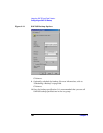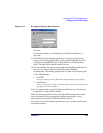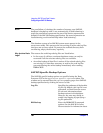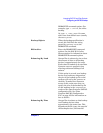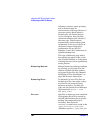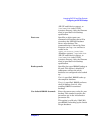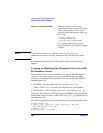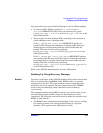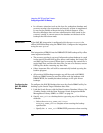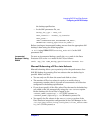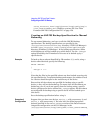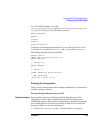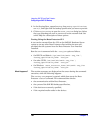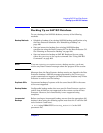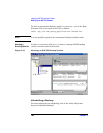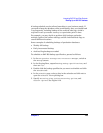
Integrating SAP R/3 and Data Protector
Configuring an SAP R/3 Backup
Chapter 2192
• In a disaster situation (such as the loss of a production database and
recovery catalog), the restoration and recovery of data is complicated.
It may not be possible without the help of Oracle Support. If the
Recovery Manager does not have administrative data stored in the
recovery catalog, it cannot recover the database on the basis of the
backups that have been made.
IMPORTANT If the SAP R/3 integration is configured with the user Internal, the
offline SAP R/3 backup using the RMAN fails. Configure the integration
using the user System.
The integration of RMAN into the BRBACKUP SAP backup utility offers
some important benefits:
• The recovery catalog is not used. Information about backups is saved
in the control file and SAP log files. After each backup, the control file
and SAP log files are saved. When data is restored, the control file is
copied back first and then the data files. In case of a disaster, restore
SAP log files before restoring any data files.
• Other important files will still be automatically backed up using the
backint program.
• All previous SAP backup strategies can still be used with RMAN.
However, RMAN cannot be used for offline redo log backups with
BRARCHIVE, for standby database backups, or for split mirror
backups.
Configuring the
SAP R/3 RMAN
Backup
To configure the SAP R/3 backup that uses the Oracle RMAN utility for
backing up the Oracle Target Database data files:
1. Link the Oracle Server with the Data Protector Database Library. See
“Linking Oracle with the Data Protector Oracle Integration Media
Management Library (MML) on UNIX” on page 14.
2. Specify rman_util as a backup device type using any of the following
methods:
— Select the Brbackup_RMAN_Offline or
Brbackup_RMAN_Online template when creating the backup
specification.
—Specify the -d rman_util BRBACKUP parameter when creating



